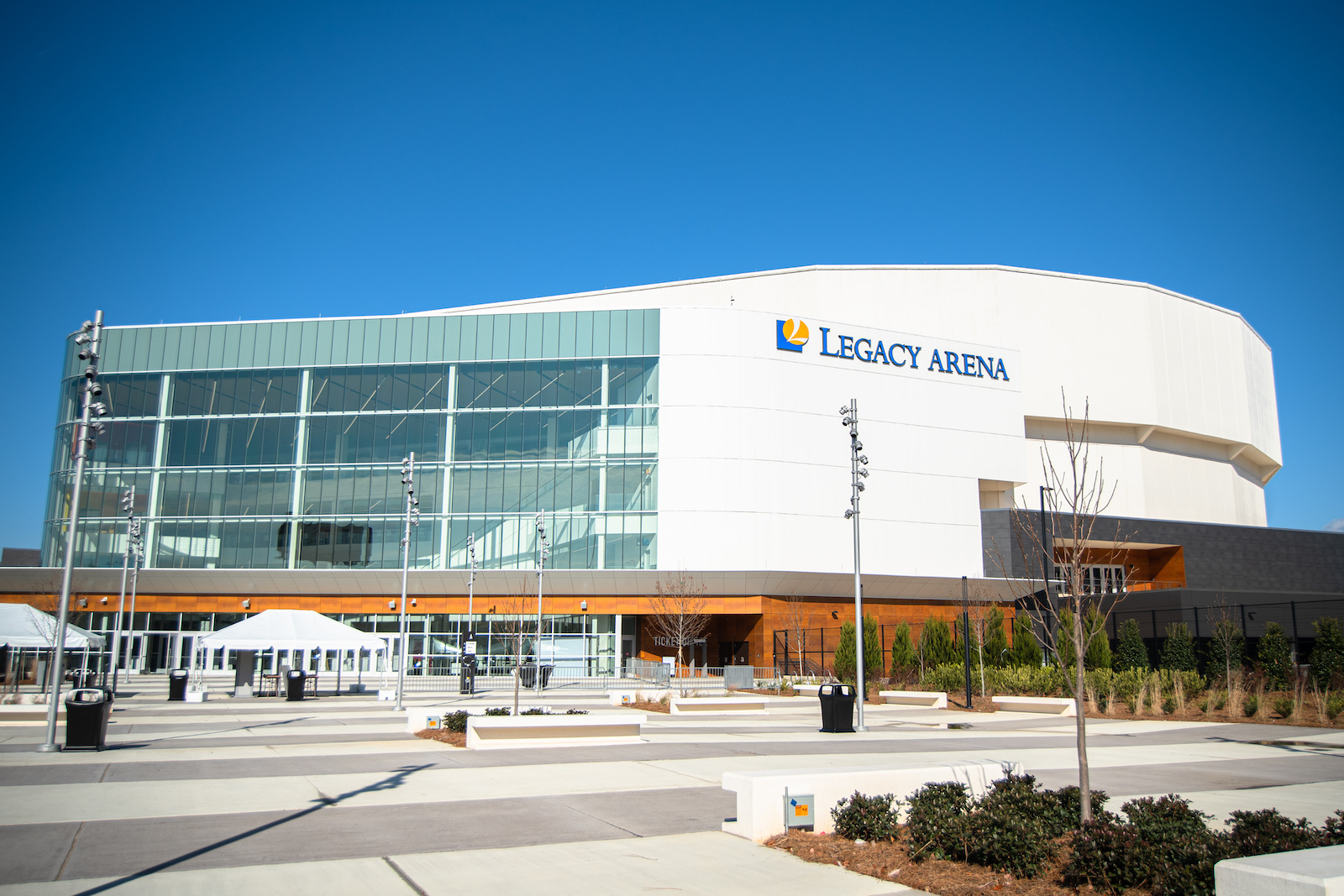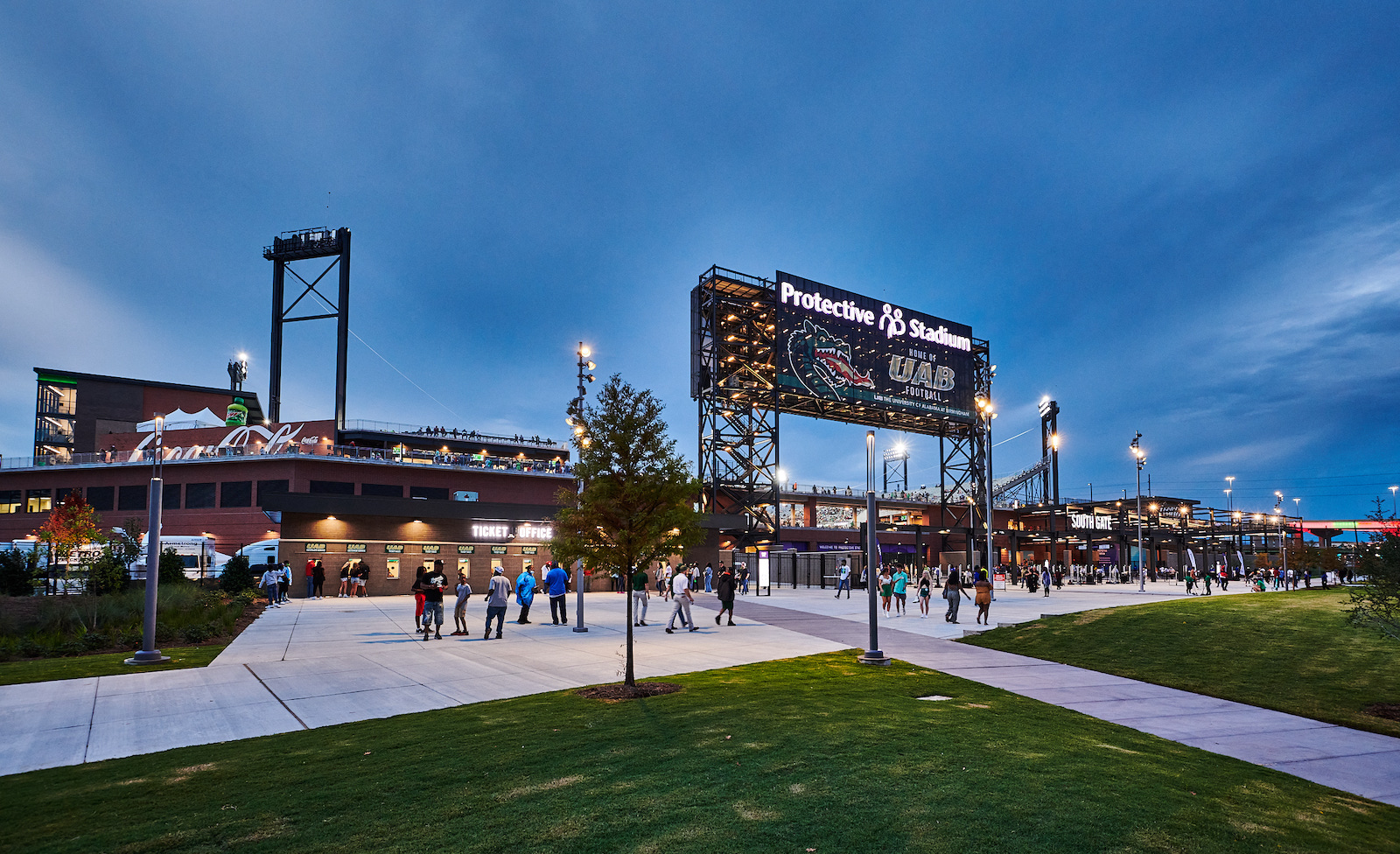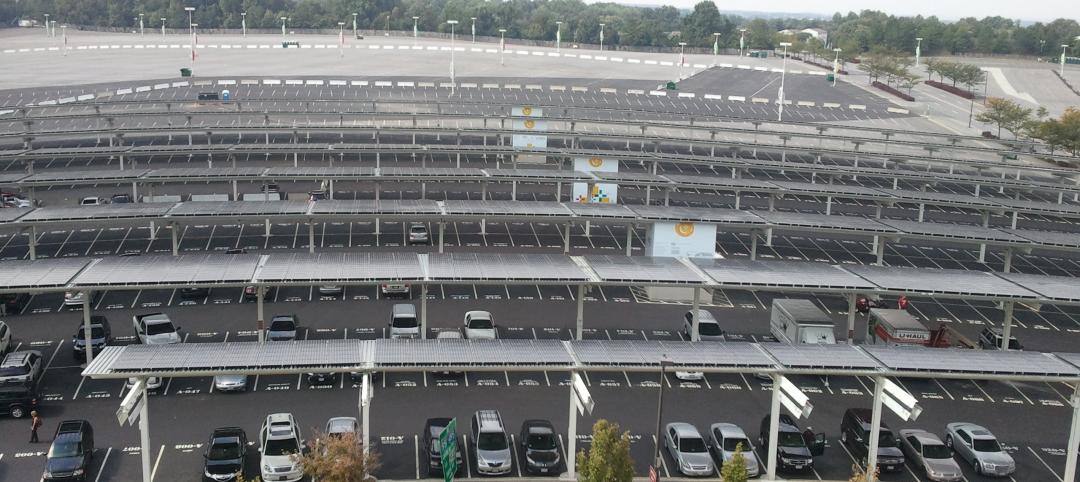Global design firm Populous collaborated with the Birmingham Jefferson Convention Center to open two new venues in Birmingham, Alabama this past Fall. Both venues are located in Birmingham’s downtown area, and are a part of the Birmingham Jefferson Convention Complex (BJCC).
The Protective Plan
The 850,000-sf, $188 million Protective Stadium debuted this past Fall as the new home of the University of Alabama (UAB) at Birmingham football. The idea of a multi-purpose stadium at the BJCC has been part of their strategic plan for many years.
Birmingham wanted to make sure they planned out bringing in a stadium that was unique to their city. Populous and the BJCC had a vision of a stadium designed to accommodate football, soccer, concerts, and other events. The red brick and black steel materials integrated in the complex are influenced by Birmingham’s heritage and landmarks. Every element of the new stadium was thought out strategically to help represent Birmingham.
“Located in the heart of downtown Birmingham and across the street from the popular Uptown entertainment district Populous helped master plan years ago, the site was ideal for a football stadium, so it fits together very nicely,” said Jim Swords, Principal at Populous and Project Manager for both venues, in a release. “One side of the site is urban, and the other is a residential neighborhood. This one-of-a-kind stadium fits right into the site. It is scaled to the surrounding buildings and doesn’t rise above everything in a big sea of parking but is nestled into the surrounding city blocks. You can see the city from the stands, so the design is very much unique to Birmingham.”
Built To Host
A key factor in Populous’ design was making sure that the new stadium was “right sized” to attract more regional and high profile events to Birmingham. The BJCC has scheduled the Super 7 championships, the TicketSmarter Birmingham Bowl, and the opening and closing ceremonies for The World Games next summer.
As mentioned, the UAB football team was also a huge part of Populous and the BJCC’s original plan. They wanted to make sure that they provided a true college football atmosphere, and there’s no better way to do that than by having one of the largest scoreboards in the sport. There’s also a standing room plaza student section and a 360 degree concourse that circles the stadium.
Reconstruction of a Legacy

The work with Protective Stadium was not the only project the BJCC funded, and it was not the only project that Populous designed recently. Both companies teamed up again to work on the extensive, $71.7 million reconstruction of the 45-year-old Legacy Arena. They updated the old building into a modern 335,000-sf multipurpose arena that can hold 15,000 people for basketball, 16,000 for center stage concerts, and 12,000 for end concerts.
“The reconstruction of Legacy Arena was all about turning an old building into a new building, making a famed venue into a modern arena while keeping its character,” Swords said, in a release. “While everyone could see Protective Stadium being built from the outside, the arena rebuild was mostly hidden from public view. People will be amazed when they walk into Legacy Arena because it’s a 45-year-old building that will look brand new on the inside.”
New Features
The most obvious update to the facility is the new exterior. It replaces the original facade, and provides a new ground level entry that faces downtown Birmingham. There’s also a plaza entry that welcomes visitors to the glass lobby, in which they can enjoy natural light while taking a look at the views of the city.
The arena has been revitalized into a sports venue, and the new lobby features new stairs, elevators and escalators that gives the crowd the access they need. Concession stands and restrooms were also upgraded to meet today’s standards.
Inside the arena, the seating bowl itself has been upgraded. There are new seats throughout, as well as premium amenities like 12 brand new suites, a new Upper-Level Club and a newly renovated Arena Club. Also in the seating bowl, improvements were made on an operational level, such as a new sound system, lighting, ribbon boards, and other infrastructure.
Populous served as architect of record for both the new 42,000-seat Protective Stadium and the completely redesigned 15,000-seat Legacy Arena.
Related Stories
| Sep 30, 2011
Design your own floor program
Program allows users to choose from a variety of flooring and line accent colors to create unique floor designs to complement any athletic facility.
| Sep 16, 2011
Largest solar installation completed at Redskins' football stadium
On game days, solar power can provide up to 20% of FedExField’s power.
| Sep 12, 2011
First phase of plan to revitalize Florida's Hialeah Park announced
This is the first project of a master plan developed to revive the historic racetrack.
| May 25, 2011
Olympic site spurs green building movement in UK
London's environmentally friendly 2012 Olympic venues are fuelling a green building movement in Britain.
| Apr 11, 2011
Wind turbines to generate power for new UNT football stadium
The University of North Texas has received a $2 million grant from the State Energy Conservation Office to install three wind turbines that will feed the electrical grid and provide power to UNT’s new football stadium.
| Apr 5, 2011
U.S. sports industry leads charge in meeting environmental challenges
The U.S. sports industry generates $414 billion annually. The amount of energy being consumed is not often thought of by fans when heading to the stadium or ballpark, but these stadiums, parks, and arenas use massive quantities of energy. Now sports leagues in North America are making a play to curb the waste and score environmental gains.
| Mar 25, 2011
Qatar World Cup may feature carbon-fiber ‘clouds’
Engineers at Qatar University’s Department of Mechanical and Industrial Engineering are busy developing what they believe could act as artificial “clouds,” man-made saucer-type structures suspended over a given soccer stadium, working to shield tens of thousands of spectators from suffocating summer temperatures that regularly top 115 degrees Fahrenheit.
| Mar 11, 2011
University of Oregon scores with new $227 million basketball arena
The University of Oregon’s Matthew Knight Arena opened January 13 with a men’s basketball game against USC where the Ducks beat the Trojans, 68-62. The $227 million arena, which replaces the school’s 84-year-old McArthur Court, has a seating bowl pitched at 36 degrees to replicate the close-to-the-action feel of the smaller arena it replaced, although this new one accommodates 12,364 fans.














